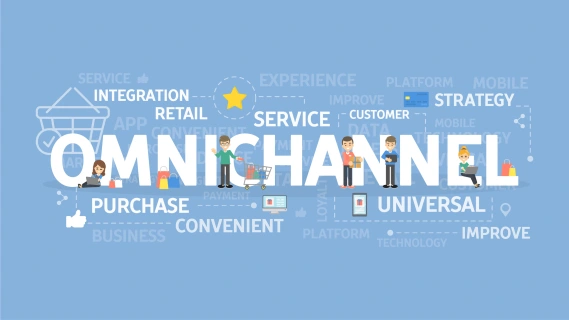Your customers aren’t one-dimensional. They don’t use one single channel to get information about brands and products ... so why would you use just one to market to them?
Today’s savvy marketers understand that having an omnichannel marketing for small business strategy is essential when trying to connect with consumers who flit from one device to another, and from one channel to another (social media to an app to a website).
The more you get your brand in front of your target audience, the closer you get to actually converting them into customers.
Here’s an example.
Beth may send texts and hop on social media on her phone, but she prefers to shop on her tablet or read content on her desktop. By implementing a multi-pronged marketing approach, you can reach her on each of these devices in a relevant way.
The customer journey is a little longer these days
The journey Beth takes to end up buying a product on your website is a lot longer than it used to be. Whereas 10 years ago, she might have seen an ad for the product in a magazine (a paper magazine; remember those?), now she needs multiple touchpoints with your brand before she’ll make that decision. Why? Simply because she’s inundated with brands trying to get her attention, so you’ve got to work harder to reach her.
She will buy from you after.
She sees your Facebook ad.
She follows your brand on Twitter.
She signs up for your emails.
She gets an enticing offer via email.
The key is spreading your marketing efforts out across multiple channels because you never know which will be the tipping point that finally compels Beth (or anyone else) to buy from you.
Omnichannel isn’t just about marketing
Yes, you want your marketing message to have the widest reach, but creating loyal and repeat customers requires a bit more with the omnichannel approach. Beth also should be able to make a purchase from you on different devices and platforms. The fact that about a third of all sales in the U.S. are made on a mobile device should stress to you the importance of making buying easy on multiple platforms.
Don’t stop with a mobile-friendly e-commerce store; look into adding the functionality to sell via messenger apps, a customized mobile app, Amazon and other distribution channels, and even via text.
And don’t overlook customer service as part of the omnichannel experience: calling an 800 number has become a nearly extinct act as more brands are adding chatbots, texting, social media, and Facebook Messenger or WhatsApp to their list of ways customers can reach them.
Getting started with omnichannel marketing for small business
The simple answer to how to get started is: don’t put all your marketing eggs in one basket. But you shouldn’t try to use every channel out there in your marketing strategy. Instead, get to know your customers and create customer profiles that help you understand which channels your target audience frequents.
If you’re marketing to Baby Boomers, Instagram is not the place. If you want Millennials, mobile search better factor in heavily to your plan. Even if you’re not entirely sure which channels are best, try a few out then measure results so that you understand which channels are having the biggest impact in reaching your audience.
Make sure your messaging across all channels and platforms is consistent. A shopper in your store should see similar signage and promotions from what she sees on your Instagram or Snapchat account.
Give up trying to fully own your marketing message with digital marketing; your fans can be your biggest ally. A tweet, video demonstration, or blog review is user-generated content that is essentially free advertising. Monitor what’s being said about your brand online and be gracious to influencers and fans who talk about your products. It never hurts to send them free products as a thank-you!
And connect the dots between various channels, because they can really reinforce one another. Encourage your Facebook Page followers to sign up for email offers. Place signage advertising your mobile wallet loyalty program in stores. Boost social media follows via email. Share product reviews from influencers on social.
Don’t underestimate offline marketing’s role here, either. If it’s right for your brand, advertising in local publications, sending direct mail coupons, or simply placing in-store signage about promotions can tie in nicely to your online marketing strategy.
Today, marketing across devices and channels isn’t a nice-to-have; it’s imperative for brands who want to stay in front of their audiences, build a relationship with them, and keep them coming back for more.


